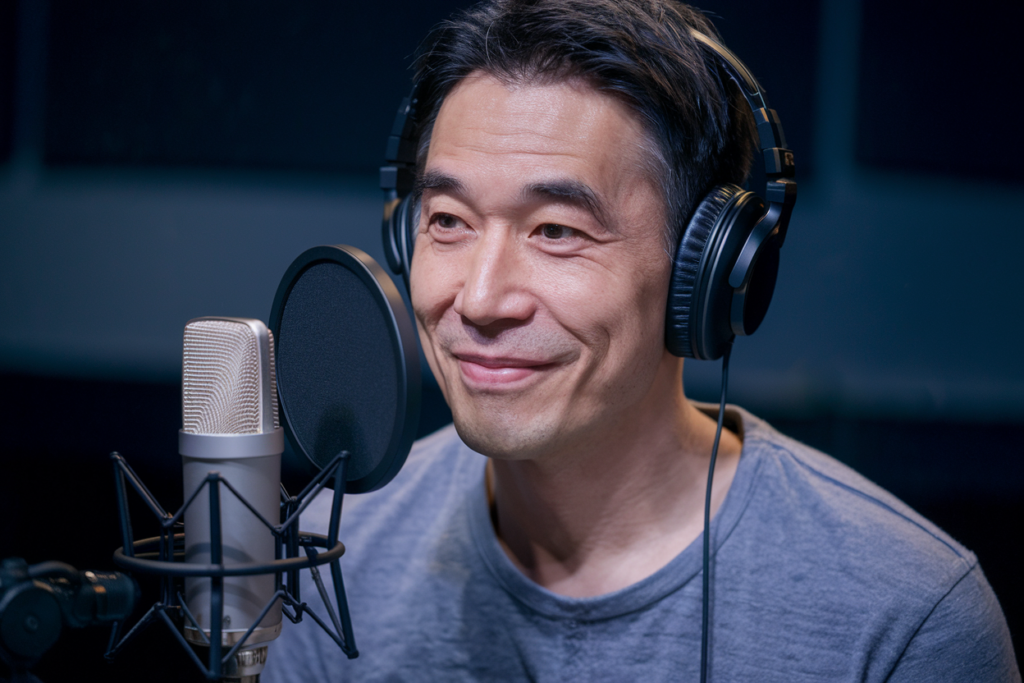Key Takeaways
- Understanding the significance of Japanese accents is crucial for creating authentic and impactful voiceovers that resonate with audiences.
- Japan’s regional dialects, such as Tokyo, Osaka, Hokkaido, and Kyushu, each offer unique characteristics that can influence pronunciation and emotional tone.
- Selecting the appropriate accent based on project requirements enhances relatability; formal projects might suit a Standard Tokyo accent while casual ones may benefit from regional varieties like Kansai.
- Knowing your target audience demographics helps in choosing an accent that fosters familiarity and emotional connection, elevating overall engagement.
- Best practices include thorough research on accents through listening to native speakers and collaborating with them to ensure cultural nuances are accurately represented.
Ever wondered how the right accent can transform your Japanese voiceover project? Choosing accents for Japanese voiceover isn’t just about sounding authentic; it’s about connecting with your audience on a deeper level. Whether you’re working on anime, video games, or commercials, the accent you select can make or break the experience.
Understanding Japanese Accents
Choosing the right accent in Japanese voiceovers is essential for resonating with your audience. Different accents can evoke various emotions and cultural nuances, making it vital to understand their significance.
Regional Variations
Japan features multiple regional dialects, each with distinct characteristics. These variations can affect pronunciation, intonation, and even vocabulary. Some notable regions include:
- Tokyo: The standard accent often used in media. It’s clear and neutral.
- Osaka: Known for its lively tone and unique expressions; this accent adds a friendly vibe.
- Hokkaido: Features softer sounds and influences from indigenous languages.
- Kyushu: Has a more pronounced intonation that might come across as warm or intense.
Recognizing these regional differences helps you select the most suitable voice talent for your project, ensuring authenticity resonates with listeners.
Common Accents in Voiceover
In voiceovers, specific accents play crucial roles depending on the content type. Here are some common ones to consider:
- Standard Tokyo Accent: Ideal for formal settings like corporate videos or educational material.
- Kansai Accent (Osaka): Great for advertisements aiming to create an upbeat atmosphere or connect emotionally with audiences.
- Nagoya Accent: Often used in local storytelling or character-driven narratives due to its unique charm.
Selecting the right accent enhances relatability and engagement. Think about your target audience—what do they expect? Choosing a voice actor who embodies the desired accent not only boosts credibility but also enriches overall communication in your project.
Importance of Accent in Voiceover
Choosing the right accent for voiceovers isn’t just about sounding authentic; it plays a crucial role in how your message resonates with the audience. Different accents carry unique cultural nuances and emotional tones, making them vital for creating impactful projects.
Impact on Authenticity
Authenticity is key when selecting voice talent for any project. An accent that matches the character or context can enhance believability and immersion. For instance, using a Standard Tokyo accent in formal settings conveys professionalism, while an Osaka accent might add a lively touch to commercials. When you choose an appropriate accent, you ensure that listeners feel connected to the content as if it’s tailored just for them.
Audience Connection
Creating a connection with your audience often hinges on familiarity. People relate more easily to accents they recognize from their own experiences or culture. If you’re targeting a specific demographic, consider their regional characteristics—like the softer tones of Hokkaido or the distinct Kyushu inflections. By aligning your choice of voice actor with these expectations, you foster engagement and relatability that can elevate your project’s overall reception.
Accent selection impacts both authenticity and audience connection in voiceovers, so taking time to understand these elements enhances communication effectiveness across various mediums.
Factors to Consider When Choosing Accents
Choosing the right accent in voiceover projects requires careful consideration of several key factors. Each element influences how effectively your message connects with the audience.
Project Requirements
Evaluate your project requirements first. Different types of media demand distinct accents to resonate properly. For instance, a character-driven anime might benefit from a Tokyo accent for authenticity, while an upbeat commercial may require a Kansai accent to convey energy and enthusiasm. Think about the context: formal settings often call for standard accents, whereas casual or local narratives might lean towards regional variations. The specific needs of your project dictate which voice talent aligns best with your vision.
Target Audience
Understanding your target audience plays a critical role in selecting an appropriate accent. Consider demographics like age, location, and cultural background. If you’re aiming at younger audiences familiar with contemporary trends, using modern accents can enhance relatability. Conversely, traditional accents might appeal more to older viewers who appreciate cultural nuances. Know what resonates with your listeners; aligning the chosen voice actor’s accent with audience expectations fosters deeper engagement and emotional connection throughout the project.
By focusing on these factors, you ensure that every aspect of your voiceover contributes meaningfully to the overall impact of your production.
Best Practices for Choosing Accents
Choosing the right accent can transform your Japanese voiceover project. It enhances authenticity and strengthens connections with your audience. Here are some best practices to consider.
Research and Listening
Researching different accents is essential for effective voiceovers. Listen to native speakers and pay attention to pronunciation, intonation, and emotional nuances in various contexts. For instance, the Tokyo accent conveys professionalism, while the Kansai accent often feels friendlier and more casual. Dive into resources like podcasts or local media; these will provide authentic examples that inform your choice of voice talent. Familiarizing yourself with different accents helps you recognize which ones resonate best with your target audience.
Collaborating with Native Speakers
Collaborating with native speakers elevates the quality of your project significantly. Engaging a native voice artist allows you to tap into their expertise regarding cultural subtleties that might not be apparent otherwise. They understand regional variations intimately and can offer valuable insights when selecting the appropriate accent for your content. You could even involve them in auditions or casting sessions to ensure alignment between the chosen accent and character portrayal. This collaboration fosters authenticity that resonates deeply with listeners, making it an invaluable step in creating impactful voiceovers.
By focusing on research and collaboration, you’ll enhance both relatability and engagement in your projects through carefully selected accents.
Conclusion
Choosing the right accent in Japanese voiceover isn’t just a technical decision; it’s about creating an emotional connection with your audience. By understanding regional nuances and cultural implications, you can make informed choices that enhance relatability and engagement.
Whether you’re working on anime or commercials, the impact of your accent choice resonates deeply. Collaborating with native speakers can provide invaluable insights that elevate your project’s authenticity. Remember that every detail counts in voiceovers, so take the time to research and select accents that align perfectly with your characters and target demographic.
When you prioritize these elements, you’ll not only boost credibility but also enrich the overall experience for your listeners. Your attention to detail will ultimately shine through in the final product, making all the difference in how your message is received.
Frequently Asked Questions
Why is selecting the right accent important for Japanese voiceover projects?
Choosing the right accent in Japanese voiceover projects helps establish a deeper connection with the audience. It enhances relatability and engagement, which are crucial for mediums like anime, video games, and commercials.
What are some common Japanese accents used in voiceovers?
Common accents include the Standard Tokyo accent for formal settings, Kansai for upbeat advertisements, Nagoya for local storytelling, and others. Each brings unique characteristics that impact pronunciation and emotional tone.
How do different Japanese accents affect audience perception?
Different accents carry distinct cultural nuances and emotional tones. They can evoke various feelings in listeners, making it essential to choose an accent that aligns with the project’s message and target audience.
What factors should be considered when choosing a voiceover accent?
Key factors include project requirements (e.g., medium type), target audience demographics (age, location), and cultural background. These elements help ensure that the selected accent resonates effectively with listeners.
How can research improve accent selection in voiceovers?
Researching different Japanese accents involves listening to native speakers to grasp pronunciation and intonation. This understanding leads to better-informed choices that enhance authenticity and overall communication in projects.
Should I collaborate with native speakers when selecting an accent?
Yes! Collaborating with native speakers offers valuable insights into cultural subtleties and ensures that the chosen accent aligns well with character portrayal. This collaboration significantly boosts authenticity in your project.
Can an appropriate accent really transform a voiceover project?
Absolutely! The right accent can enhance relatability, engage audiences more deeply, and enrich overall communication. A well-chosen voice talent not only sounds authentic but also elevates the project’s impact significantly.







